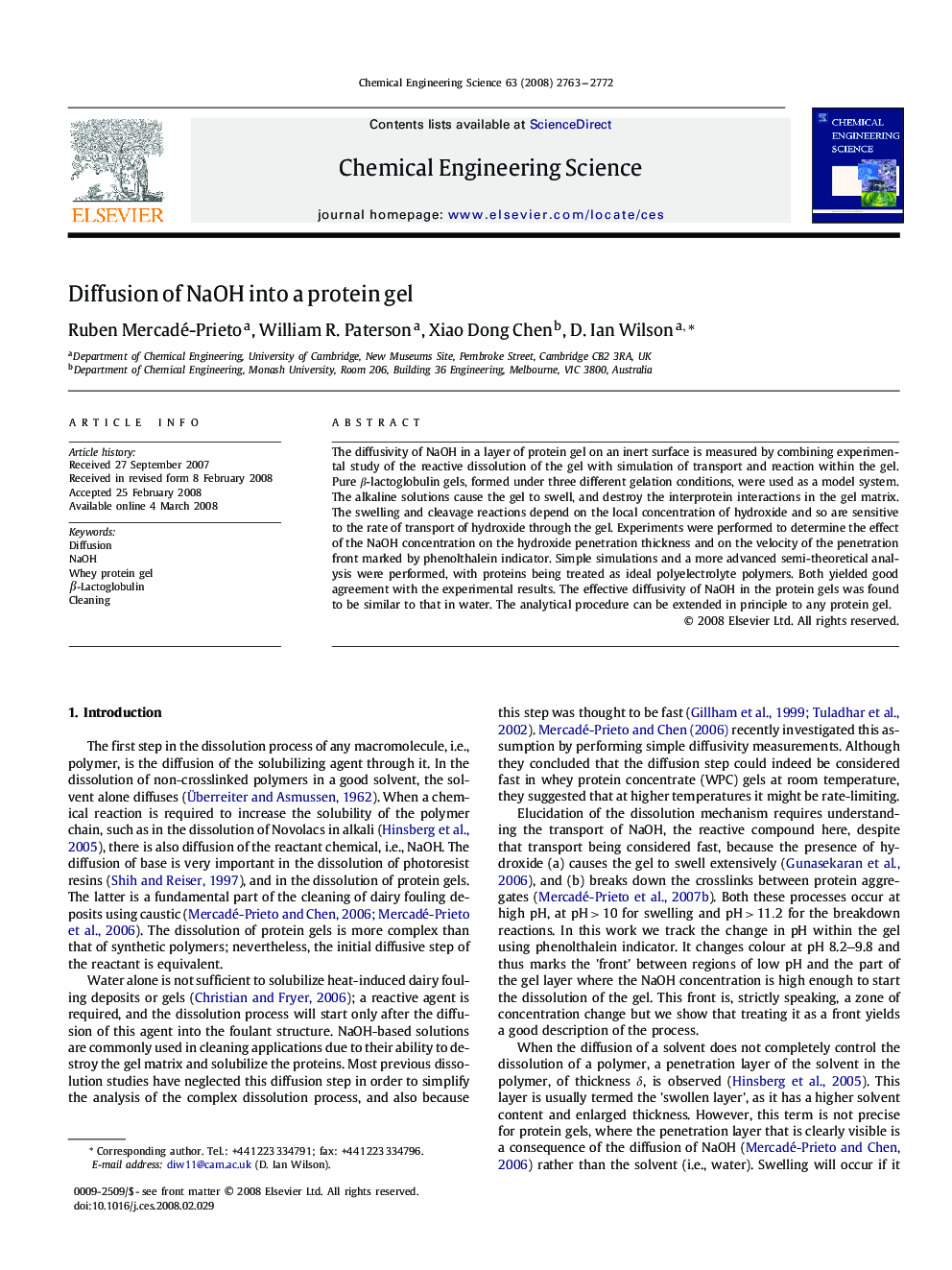| Article ID | Journal | Published Year | Pages | File Type |
|---|---|---|---|---|
| 158304 | Chemical Engineering Science | 2008 | 10 Pages |
The diffusivity of NaOH in a layer of protein gel on an inert surface is measured by combining experimental study of the reactive dissolution of the gel with simulation of transport and reaction within the gel. Pure ββ-lactoglobulin gels, formed under three different gelation conditions, were used as a model system. The alkaline solutions cause the gel to swell, and destroy the interprotein interactions in the gel matrix. The swelling and cleavage reactions depend on the local concentration of hydroxide and so are sensitive to the rate of transport of hydroxide through the gel. Experiments were performed to determine the effect of the NaOH concentration on the hydroxide penetration thickness and on the velocity of the penetration front marked by phenolthalein indicator. Simple simulations and a more advanced semi-theoretical analysis were performed, with proteins being treated as ideal polyelectrolyte polymers. Both yielded good agreement with the experimental results. The effective diffusivity of NaOH in the protein gels was found to be similar to that in water. The analytical procedure can be extended in principle to any protein gel.
